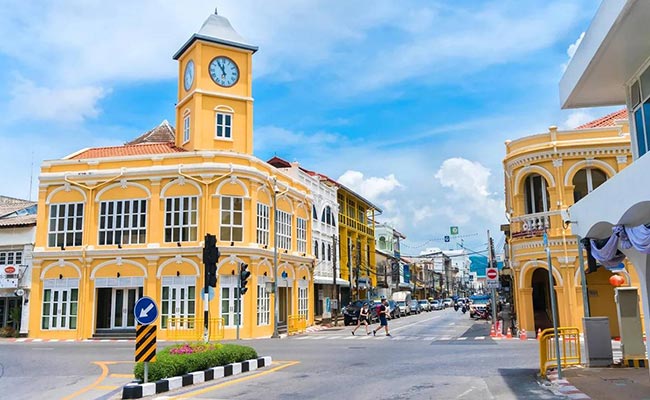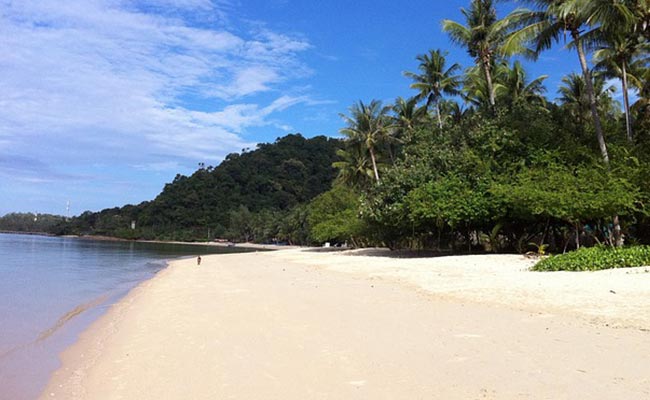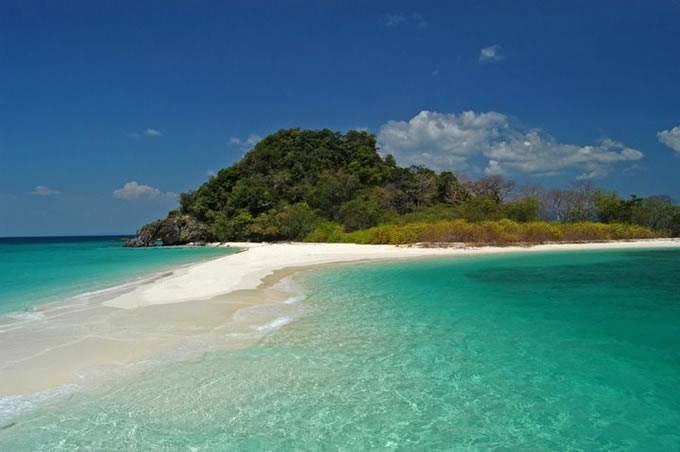In recent years, many travellers and long-time visitors have lamented that Phuket has changed. The island, once known for its laid-back charming beach towns, is now often criticised for being overcrowded, with traffic-choked streets, rising development, and unruly tourists disrupting the once tranquil atmosphere. Popular resort areas like Patong, Kata, and Karon are sometimes seen as having lost their authentic Thai character, shaped now more by mass tourism and rapid immigration than by tradition.
And while there may be some truth to these concerns, not all of Phuket has succumbed to the pressures of modern tourism. Tucked away from the chaos of the beach resorts lies a place where the island’s rich history, vibrant culture, and architectural beauty are still proudly on display: Phuket Old Town.
This historic district offers a refreshing contrast to the more commercialised parts of the island — a walkable enclave filled with Sino-Portuguese charm, colourful heritage buildings, bustling markets, quaint cafés, and a strong sense of community. Whether you're passionate about history or architecture or simply seeking a more authentic slice of Phuket, the Old Town stands as a fascinating town, quite different to that found anywhere else in the Kingdom.

Image credit: Thailand for First Time Travelers
A Brief History of Phuket Old Town
Phuket Old Town’s history is deeply rooted in the island’s significance as a major tin-mining hub during the 19th and early 20th centuries, a period that brought considerable prosperity to the region. As global demand for tin surged, Phuket became a critical node in international trade routes, attracting a wave of Chinese immigrants, primarily Hokkien, who arrived to work in the booming tin mines. These laborers, traders, and entrepreneurs would go on to form a thriving community that greatly influenced the cultural and economic fabric of the island.
At the same time, European traders and investors – particularly the Portuguese, British, and Dutch – were drawn to the lucrative tin trade. They brought with them architectural styles, business practices, and technologies that, when merged with Chinese traditions and local Thai customs, gave birth to the unique Sino-Portuguese identity that defines Phuket Old Town today.
The wealth generated from tin mining led to the construction of grand Sino-Portuguese mansions, ornately decorated shophouses, and key public infrastructure such as schools, roads, and administrative buildings. Wealthy tin barons often built lavish homes, like the iconic Baan Chinpracha, showcasing a fusion of European elegance and Chinese craftsmanship. The result was a townscape that blended Western neoclassical elements — such as pilasters, cornices, and decorative mouldings — with Chinese courtyards, tiled roofs, and carved wooden doors.

Residence of Phra Aram Sakhonkhet, one of the most famous tin mining barons of the 19th century. It is now a Thai Airways office.
The town also became home to Chinese guild halls, temples, and shrines, reflecting the social and spiritual life of the community.
Phuket Old Town emerged not only as the economic center of the island but also as a multicultural melting pot. The legacy of that era is still visible today in the town’s architecture, cuisine, language, and festivals – offering visitors a glimpse into a rich and layered history that continues to shape the identity of Phuket.Architectural Highlights
Shophouses: Practical Beauty
The shophouses of Phuket Old Town are among its most iconic structures. Built primarily between the late 19th and early 20th centuries, these buildings are long, narrow, and often connected in rows — designed to maximize use of urban space.
- The ground floor typically serves as a storefront or workshop, while the upper floors are reserved for living quarters.
- Their arched windows, ventilation panels, and ornate stucco work are not just decorative but functional, providing airflow in the tropical climate.
- Most facades are painted in soft pastels or bold jewel tones, contributing to the town's colorful and photogenic charm.
- Many of these shophouses have been lovingly restored and now host boutique cafes, art galleries, and craft shops, helping to preserve Phuket’s cultural identity.

The classic Old Town shophouses adorn the streets.
Mansions of Tin Wealth
During the tin-mining era, wealthy Chinese and Peranakan families constructed grand mansions to display their status. These homes combine European luxury — such as imported Italian floor tiles and Belgian chandeliers — with traditional Chinese features like central courtyards and feng shui-influenced layouts.
A prime example is Baan Chinpracha, built in 1903 by Phra Pitak Chinpracha, a prominent local businessman. This mansion offers a rare glimpse into upper-class life in colonial-era Phuket, with much of its original furniture and architecture preserved. It's open to the public and serves as a cultural landmark, often used as a film set due to its authenticity.
Another stunning building is the Blue Elephant Mansion (also known as the Phra Pitak Chinpracha House), now a restaurant but originally one of the grandest homes in Phuket, featuring intricate lattice work and lavish interiors.

The governor’s residence built in 1903 by Phra Pitak Chinpracha (Tan Ma Sian), the Chinese immigrant who made his fortune in tin mining. Now the Blue Elephant Cooking School & Restaurant.
Temples and Spiritual Structures
Phuket Old Town also reflects the spiritual life of its Chinese settlers through a number of vibrant temples and shrines.
Jui Tui Shrine is one of the most significant, especially during the annual Phuket Vegetarian Festival, when the streets come alive with religious processions and rituals. The shrine honors the Chinese deity Tean Hu Huan Soy and is known for its red facade, incense-filled halls, and dragon motifs.
Sang Tham Shrine, also known as the Shrine of the Serene Light, is more discreet, tucked away in an alley off Phang Nga Road. Recently restored, this 19th-century temple offers a peaceful retreat with beautifully painted murals and Taoist iconography.
These spiritual sites highlight the religious syncretism in Phuket, blending Buddhism, Taoism, and local animist beliefs — all reflected in the town’s diverse architecture.
Cultural and Historical Attractions in Phuket Old Town
Phuket Old Town isn't just admired for its architecture, it's also a treasure trove of cultural and historical landmarks that tell the story of the island’s diverse heritage. From bustling markets and beautifully preserved lanes to insightful museums, these attractions offer a deeper understanding of how Phuket evolved from a mining hub into a vibrant multicultural community.
Thalang Road: The Heartbeat of Old Town
Thalang Road is the cultural artery of Phuket Old Town. This vibrant thoroughfare is lined with Sino-Portuguese shophouses, now home to artisan boutiques, hip cafés, traditional tea houses, and street food vendors. It strikes a perfect balance between old-world charm and modern flair.
Every Sunday evening, the street transforms into the Lard Yai Walking Street Market, a lively gathering where locals and tourists come together. The market showcases Southern Thai street food, handcrafted souvenirs, live music, and cultural performances.
The festive atmosphere is enhanced by colorful lights and local art displays, making it a must-visit experience for anyone wanting to soak up the town’s energy and creativity.
Walking down Thalang Road feels like stepping back in time — yet with a modern, Instagram-worthy twist.

The night market in full swing. Image credit: Joey Santini Photography
Phuket Thai Hua Museum: A Window into the Past
Located on Krabi Road, the Phuket Thai Hua Museum is housed in one of the town’s most elegant colonial buildings, originally a Chinese school founded in 1911. Today, it serves as a museum and cultural centre, preserving the legacy of Phuket’s Chinese-Thai community.
Through a series of well-curated exhibits, vintage photographs, and multimedia presentations, visitors can learn about the early Chinese immigrants who settled on the island, their role in the tin mining industry, and their cultural integration.
The museum also covers the Baba Nyonya (Peranakan) heritage, which has played a major role in shaping Phuket’s social and cultural fabric. This museum is a fantastic stop for anyone interested in Phuket’s multicultural roots and its transformation into a major trade and tourism centre.
Soi Rommanee: From Vice to Vintage
Tucked just off Thalang Road, Soi Rommanee is one of the most charming and photogenic streets in the Old Town — but it wasn’t always so idyllic. Historically, Soi Rommanee was Phuket’s red-light district, frequented by Chinese miners and sailors seeking entertainment.
Today, the lane has been beautifully restored, with its shophouses painted in bright pastels and transformed into quaint guesthouses, gelato shops, and galleries.
While the nightlife has long faded, the romantic atmosphere remains, making it a popular destination for couples, photographers, and history buffs.
The name Rommanee, which loosely translates to “pleasant or joyful,” reflects the street’s transformation from a place of vice to a peaceful cultural gem.

Tips for Visiting Phuket Old Town
- Best Time to Visit: Early morning or late afternoon is ideal to avoid the heat.
- Wear Comfortable Shoes: The best way to explore the Old Town is on foot, so be prepared for a lot of walking.
- Plan for the Market: If possible, visit on a Sunday evening to experience the lively Walking Street Market.
- Stay Nearby: Consider staying in a boutique hotel in the Old Town to give yourself a full day.
- Bring a Camera: The colourful buildings, street art, and vintage shophouses make Phuket Old Town a dream for photography lovers.
- Respect Local Customs: When visiting temples or shrines in the area, dress modestly and remove shoes when required.
- Try the Local Cuisine: Don't miss out on local Peranakan dishes and Phuket specialties — many small eateries and food stalls serve authentic flavours unique to the region.
- Watch for Street Art: Keep an eye out for the impressive murals and graffiti art hidden in alleyways — they tell stories of the town’s cultural heritage and modern identity.
- Cash is King: While many places accept cards, smaller vendors, market stalls, and street food sellers may only take cash. ATMs are available, but it’s good to carry some baht.
- Mind the Heat: Carry a bottle of water, wear sunscreen, and consider a hat or umbrella — especially if you’re exploring mid-day.
Last Updated on



Leave a Reply